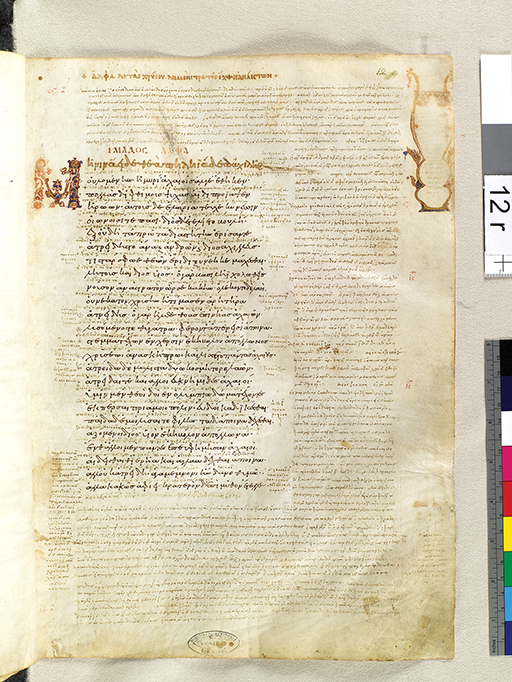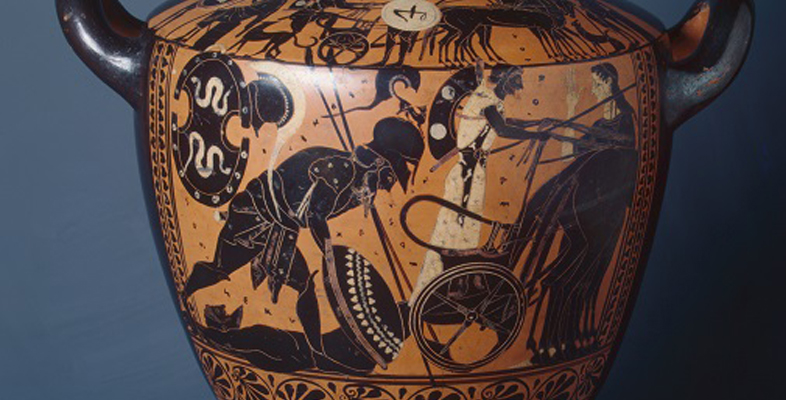3 Homer’s oral art I
The fact that the Iliad was composed orally means that it has a number of features that are specific to this type of poetry. Even though all we have is a written version of the text, we can still identify a number of these oral features.
Activity 4
Read through the opening seven lines of the Iliad again. What stylistic features of this kind of poetry do you find striking or odd, or would like to know more about?
Sing, goddess, the anger of Achilles, Peleus’ son,
the accursed anger which brought the Achaeans countless
agonies and hurled many mighty shades of heroes into Hades,
causing them to become the prey of dogs and
all kinds of birds; and the plan of Zeus was fulfilled.
Sing from the time the two men were first divided in strife—
Atreus’ son, lord of men, and glorious Achilles.
Discussion
There are several features that might have stood out to you. You might have noticed the address to the goddess, the mention of singing, and the way the heroes are described – for example, Achilles as ‘Peleus’ son’ in the first line.
The first of these features, the address to the goddess, is not distinctive to oral poetry, but is something that appears in a lot of ancient poetry. The goddess in question is one of the Muses, a group of goddesses who were said to inspire all creative endeavours. So here, the poet is asking the Muse to tell the story of Achilles’ anger through him, suggesting that he is a vessel for divine inspiration.
The other two features highlighted – singing and the descriptions of the heroes, which we call ‘epithets’ – are closely linked to the oral nature of the Iliad. While we read Homer in a book, and are able to because of a long manuscript tradition going back centuries of copying his poems (see Figure 6), Homer’s early audiences would have received his poems by listening to them being performed orally. Each of Homer’s poems would take some 3 days to perform, and would likely be performed in a public festival setting, like the Athenian Great Panathenaia festival mentioned above. If we remember that these poems were usually composed in performance, we can begin to understand some of the distinctive features of Homeric poetry, including ones that don’t translate well into English but are very effective in the original ancient Greek.

